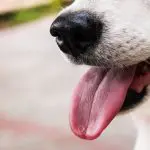Learning the secrets of doggy dental care
For dogs, dental hygiene is important beyond having healthier teeth. Gum and teeth infection, broken teeth or tooth loss, and related periodontal problems involving connective tissue in the dog’s mouth can lead to bacteria making its way into the pet’s bloodstream. This can lead to infection of the heart, lungs, liver, intestinal tract, kidney and other internal organs and other side effects.
Dental pet care experts say that up to 80% of dogs manifest signs of dental diseases by three years of age in the absence of proper oral hygiene. Getting dogs accustomed to dental care as early as possible is crucial to ensuring their long-term health. Cases such as malocclusion, bad bite, deciduous teeth, and tartar formation can be spotted earlier with regular check-ups. This will prevent the situation from worsening and help save the dog’s teeth.
It should be noted that pets seldom experience tooth decay, due in part to their non-acidic saliva, cone-shaped teeth and natural cleaning from their habit of chewing and gnawing. However, if you notice that your pet has bad breath it is often a sign that infection is already present and that tartar has already built up. Tartar can be found below the gums and breeds bacterial growth, leading to inflammation.
Bringing your dog to a veterinarian for scaling and polishing every two or three years may be benificial, but this should be unnecessary if you follow your own regular dental care. Making the dog used to being handled as early as possible will make it comfortable even when its mouth and teeth are being held and prevent it from becoming angry or biting.
There are certain things which can increase the likelihood of your dog developing tooth problems -if you live in an area with hard water, for example, it is more likely that your dog’s teeth will develop tartar deposits. If your dog eats mostly soft foods tooth problems may be more likely, because soft foods can leave debris in gum pockets which are at the base of the teeth, and this can lead to infection. These not only cause problems for your dog’s teeth – studies show that a massive 98% of cases of bad breath in dogs are caused by periodontal disease, which is the result of tartar build-up and gum infections. The best way of preventing these problems is with regular brushing of your dog’s teeth.
There are basic steps dog owners can take to keep their pet’s teeth healthy. You can buy readily available toothpastes and toothbrushes designed especially for dogs. The finger brush – similar to that for the human infant – is a rubber hood worn by the owner over his finger. The product has soft rubber bristles on one side and is used by the owner to clean the teeth and massage the gums of his pet. The finger brush can later be replaced by a regular dog toothbrush after the pet becomes accustomed to the cleaning process.
Even if you have a great relationship with your dog, staring into its mouth can be intimidating. But by gradually getting your dog used to the idea of having you handling his mouth, you’ll be able to clean his teeth and take care of his mouth without too many problems.
My book “Canine-911!” gives detailed instructions on how to brush your dog’s teeth and how to get your dog comfortable to the process, so that major problems don’t develop.
If you have a young dog, it is much easier to get started. Even if your dog is a few years old you can still get him used to the idea, but you may find that it takes a bit longer before your dog is willing to let you brush his teeth. To get your dog used to having his mouth handled, start by lifting his lips and looking at his teeth – do this two or three times a week, and each time, give him a small treat after you have finished. This will help both you and your dog relax when you are handling his mouth, and your dog will be more comfortable with the process when he knows there will be a treat when it’s over.


